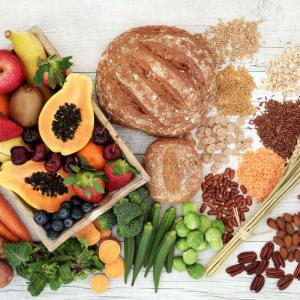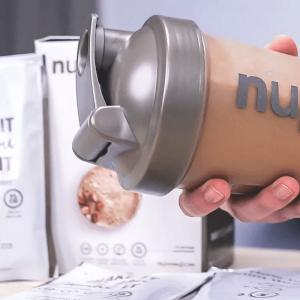With correct information and, if necessary, with help from a lactation specialist (lactation consultant), most causes of pain during breastfeeding can be prevented or eliminated. Here are some of the causes of pain during breastfeeding and how they can be remedied:
Incorrect attachment to the breast causes pain
How does the mother know that the baby is incorrectly attached to the breast? How does the pain caused by incorrect attachment manifest itself ?
- It appears while the baby sucks
- Nipple ridges are formed
- The baby fusses or falls asleep at the breast because most of the time, with improper attachment, the transfer of milk becomes ineffective, and the baby is not satisfied with the milk received.
What can be done for a correct attachment of the newborn/baby to the breast?
- Putting the newborn to the breast as soon as possible after birth. That's why maternity hospitals that promote skin-to-skin contact immediately after birth, called the "Magic Hour" are important , a beneficial interval for favoring the attachment between the mother and her newborn.
- Achieving a correct asymmetric attachment - with lips spread over the breast, mouth wide open, nose away from the areola, chin and cheeks pressed against the breast
- Giving the breast at the first signs of hunger because it is often difficult to attach an overly hungry baby to the breast
- Finding a comfortable breastfeeding position that allows the baby to be positioned with the whole body facing the mother
- Avoiding as much as possible the use of pacifiers, bottles or silicone protectors because they can impact attachment and sucking even if they are offered occasionally.
Breast cysts
Breast sores are cracks that appear on the nipples, they present a risk of infection and are painful for the mother, making breastfeeding a difficult process.
How to cure ringworm?
The first step is for the mother, with the help of the medical staff, the breastfeeding consultant or with the support of another mother with breastfeeding experience, to correct the attachment of the baby to the breast. Then, avoid excessive washing of the breasts, wearing bras and/or tight bustiers. To treat sore throats, apply pure lanolin and/or compresses with breast milk to the nipples.
The baby has a lingual frenulum
How can you tell if the baby has a lingual frenulum?
- The mother feels pain during breastfeeding
- In some cases, the frenum is visibly restrictive at the level of the tongue or at the level of the baby's upper lip
- The baby cannot properly attach to the breast, although the mother follows the recommended steps for a natural, natural breastfeeding
- After breastfeeding, the nipple remains deformed
- Over time, the presence of a restrictive brake can lead to an unsatisfactory weight curve (the baby does not gain weight), increased gastroesophageal reflux, insufficient lactation, refusal of the breast and other problems.
What can be done if the newborn has a restrictive brake?
In addition to obtaining the most correct attachment, it is recommended that the mother contact a lactation consultant for evaluation. If the child is diagnosed with lingual/labial frenulum, a frenectomy is performed. Through this intervention performed by the specialist doctor, the restrictive brake is removed.
Candida on the nipple
How does candida manifest itself at the level of the nipple?
- Persistent discomfort/pain
- Sometimes, the appearance of a local stinging sensation, accompanied by changes in the appearance of the nipple and areola (redness, dryness, scaling)
- Also, in some cases, the presence of candidal stomatitis in the baby's mouth is evident.
To prevent breast candida, it is important to avoid excessive washing of the breasts and wearing tight bras/bras. The specific treatment for both the mother and the baby is administered on the doctor's recommendation.
Blocked channel - mastitis
Channel blocked during breastfeeding - mastitis - how does it manifest itself?
- Through persistent pain locally and at the level of the breast
- Sometimes the blocked channel presents itself as a hard area inside the breast that can be felt, often accompanied by a "pearl of milk" at the level of the nipple
- Fever, chills and general cold-like symptoms suggest the possibility of mastitis
- Redness is observed at the level of the breast.
What can be done in case of blocked channel - mastitis?
- To prevent channel blockage during breastfeeding and/or the installation of mastitis: breastfeeding on demand, ensuring a correct attachment and effective sucking, avoiding uncomfortable bras/bras, and the mother should hydrate properly.
- If the symptoms have already appeared, we recommend warm compresses before breastfeeding, massaging the area of the blocked duct during breastfeeding and, on a case-by-case basis, using the pump to empty the breast better.
- In the case of mastitis, a medical consultation and administration of a specific treatment is necessary.
- Consultation with a lactation specialist is recommended.
In conclusion, it is worth emphasizing that breastfeeding should not hurt, so at the first signs of discomfort, these possible causes should be evaluated and treated accordingly.







